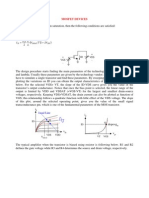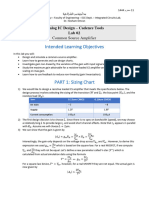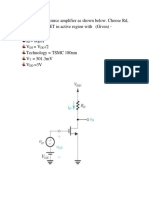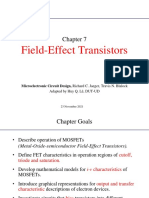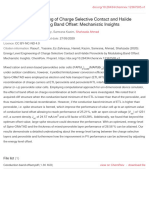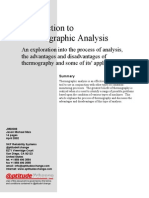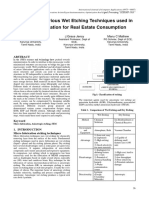V.
Simulation part
IV.1 Static Simulation
To perform the IDS_VDS characteristics of a MOSFET using Pspice, we consider the
circuit shown in Figure. 1. Here two independent voltage sources, VGS and VDS, will be
used to establish the different bias conditions on the enhancement-mode n-channel
MOSFET whose source and body are connected together.
R1 1k
C1
Vout
VCC
R2 100k 15Vdc
C2 M1 Mos_N 1u Rload 10k
0
4.7u R3 100k
0
VOFF = 0 Vsin
VAMPL = 10mV
FREQ = 1k R4 1k C4 1u
Figure.1: Common source amplifier
The NMOS transistor is assumed to have: Vt=+2V, unCOX= 2mA/V2, L=100um, and
W=300 um, lambda=0 V-1 (modulation factor).
1- Create the Pspice model for this MOSFET using .model statement.
2- Create the appropriate simulation profile that evaluates the operating point and the
small signal parameters and Fill the following table using the output file:
Lambda VGS VDS VTH VDSAT IDSAT gm gds W/L
[V-1] [V] [V] [V] [V] [mA] [mS] [mS]
3- Change the transistor geometry and the bias voltage VCC in order to adjust the
operating point to a current IDSAT equal to 8.6mA while VDSat remains constant.
4- Set Vcc=15V and W/L= 3 and Plot the characteristic IDS vs. VDS using the .DC
analysis command and Label its regions of operation (linear, triode and saturation).
5- On the same graph, plot the static load line IDS vs. VDS and record from the graph
the operating point Q.
6- Plot the characteristic IDS vs. VGS (LOG scale) using the .DC analysis command and
Label its regions of operation (subthreshold, quadratic and linear).
7- Plot the network of IDS vs. VDS characteristics for each VGS value (1V, 3.2V and
4V) using the .DC analysis command.
8- On the same graph, plot the static load line IDS vs. VDS, determine the region of
operation of the MOSFET for each VGS and record all the operating points
10
� Q(VDS,IDS) and VDSAT from the graph. Check the hand calculations against the
simulation results.
VGS VDS IDS VDSAT
[V] [V] [mA]
Q1 3.2 1.2
Q2 4 0.74 7.2 2
IV.2 MOSFET application (Amplification)
We will be using a MOSFET as Common source amplifier. The circuit in Figure. 1
corresponds to a Common source amplifier
R1 1k
C1
Vout
VCC
R2 100k 15Vdc
C2 M1 Mos_N 1u Rload 10k
0
4.7u R3 100k
0
VOFF = 0 Vsin
VAMPL = 10mV
FREQ = 1k R4 1k C4 1u
Figure. 3 : Common source amplifier
1- Give the appropriate nodes to connect all the elements in the circuit.
2- Obtain the input-output transfer characteristic (VTC) using PSpice DC sweep. You
need to remove the coupling capacitors C for this simulation. Find the voltage gain
from the plot.
3- Obtain the frequency response of the amplifier using PSpice AC sweep. You need to
use C for this simulation. Change the MOSFET by IRF150 and Find the voltage gain
and bandwidth from the plot.
4- Obtain the input-output waveform of the amplifier from PSpice, using a 10mV, 1kHz
sine wave input.
Dr. BENDIB Toufik
Solution :
IV.1 Static Simulation
The NMOS transistor is assumed to have: Vth=+2V, unCOX= 2mA/V2, L=100um, and
W=300 um, lambda=0 V-1 (modulation factor).
11
� 1- Create the Pspice model for this MOSFET using .model statement.
.MODEL Mos_N NMOS(kp=2m Vto=+2V lambda=0)
Mn 4 2 5 5 Mos_N L=100u W=600u
2- Create the appropriate simulation profile that evaluates the operating point and the
small signal parameters and Fill the following table using the output file:
We use .OP command
Lambda VGS VDS VTH VDSAT IDSAT gm gds W/L
[V-1] [V] [V] [V] [V] [mA] [mS] [µS]
0 3.2 6.4 2 1.2 4.3 7.19 0 3
MOSFET-Common source Amplifier
.LIB
Vin 1 0 sin (0 10m 2K 0)
VCC 3 0 DC 15
*Vds 4 5 dc 0
*Vgs 2 5 dc 3.2
R1 3 4 1K
R2 3 2 100k
R3 2 0 100K
R4 5 0 1K
Rload 6 0 10K
C1 4 6 1u
C2 1 2 4.7u
C4 5 0 1u
.MODEL Mos_N NMOS(kp=2m Vto=+2V lambda=0)
Mn 4 2 5 5 Mos_N L=100u W=300u
.op
.End
3- Change the transistor geometry and the bias voltage VCC in order to adjust the
operating point to a current IDSAT equal to 8.6mA while VDSat remains constant.
We have for the last simulation W/L = 300/100=3:
1 ' W ref W
I Dsat _ ref kn VGS VTH 2 1 k n' ref V dsat _ ref (1)
2 L ref 2 L ref
1 'W W
For the new design W/L I Dsat kn VGS VTH 2 1 k n' Vdsat (2)
2 L 2 L
I Dsat _ ref W ref L V dsat _ ref W W ref I V dsat _ ref
(1)/(2): Dsat (3)
I Dsat L ref W V dsa L L ref I Dsat _ ref V dsa
12
�Wref I Dsat 8.6mA V
3, 2 and dsat _ ref 1 VDSat remains constant
Lref I Dsat _ ref 4.3mA Vdsa
W 600um
(3) becomes: 3 2 1 6
L 100im
From the static circuit:
VCC R1 R4 I Dsat Vds 2k 8.6mA 6.4V 23.6V
The netlist becomes:
MOSFET-Common source Amplifier
.LIB
Vin 1 0 sin (0 10m 2K 0)
VCC 3 0 DC 23.6
*Vds 4 5 dc 0
*Vgs 2 5 dc 3.2
R1 3 4 1K
R2 3 2 100k
R3 2 0 100K
R4 5 0 1K
Rload 6 0 10K
C1 4 6 1u
C2 1 2 4.7u
C4 5 0 1u
.MODEL Mos_N NMOS(kp=2m Vto=+2V lambda=0)
Mn 4 2 5 5 Mos_N L=100u W=600u
.op
.End
Simulation results (output file):
NAME Mn
MODEL Mos_N
ID 8.60E-03
VGS 3.20E+00
VDS 6.39E+00
VBS 0.00E+00
VTH 2.00E+00
VDSAT 1.20E+00
4- Plot the characteristic IDS vs. VDS using the .DC analysis command and Label its
regions of operation (linear, triode and saturation).
Define Vgs and Vds sources as:
Vds 4 5 dc 6.4 (Bias point)
Vgs 2 5 dc 3.2 (Bias point)
Then sweep the Vds from 0 to 15V
.dc Vds dc 0 15 0.1
Code:
MOSFET-Common source Amplifier
.LIB
13
�Vin 1 0 dc 0 sin (0 10m 10K 0) AC 1 1K
VCC 3 0 DC 15
Vds 4 5 dc 6.4
Vgs 2 5 dc 3.2
R1 3 4 1K
R2 3 2 100k
R3 2 0 100K
R4 5 0 1K
Rload 6 0 10K
C1 4 6 1u
C2 1 2 4.7u
C4 5 0 1u
.MODEL Mos_N NMOS(kp=2m Vto=+2V lambda=0
Mn 4 2 5 5 Mos_N L=100u W=300u
*Mn 4 2 5 5 IRF150
.op
.DC Vds 0 15 0.1;
.PROBE
.END
5- On the same graph, plot the static load line IDS vs. VDS and record from the graph
the operating point Q.
In the Add trace expression: write: (15-Vds)/2k
6- Plot the characteristic IDS vs. VGS (LOG scale) using the .DC analysis command and
Label its regions of operation (subthreshold, quadratic and linear).
Sweep the Vgs voltage from 0 to 15 and Replace the command .dc Vds dc 0 15 0.1 by
.dc Vgs dc 0 15 0.1
In the Probe, select Y-Axix log to show the logarithmic value of ID
14
� 7- Plot the network of IDS vs. VDS characteristics for each VGS value (1V, 3.2V and
4V) using the .DC analysis command.
Sweep the Vds from 0 to 15V and Vgs with list value as:
.dc Vds dc 0 15 0.1 Vgs list 1 3.2 4
8- On the same graph, plot the static load line IDS vs. VDS, determine the region of
operation of the MOSFET for each VGS and record all the operating points
Q(VDS,IDS) and VDSAT from the graph. Check the hand calculations against the
simulation results.
VGS VDS IDS VDSAT
[V] [V] [mA] [V]
Q1 3.2 6.4 4.3 1.2
Q2 4 0.74 7.2 2
Hand calculation:
Q1 (Vgs=3.2) in the saturation region:
1 W
- we calculate the drain current from: I Dsat k n' V GS VTH
2
2 L
15
� - we calculate the Drain source voltage VDS from the static load line equation:
VCC Vds
ID
R1 R4
- we calculate VDSAT from: VDSAT= VGS-Vth
Q1 (Vgs=4) in the linear region:
- we calculate the drain current and the Drain source voltage VDS from the system of
' W
I D k n L VGS VTH V DS
equation:
V V ds
I D CC
R1 R 4
IV.2 MOSFET application (Amplification)
We will be using a MOSFET as Common source amplifier. The circuit in Figure. 1
corresponds to a Common source amplifier
R1 1k
C1
Vout
VCC
R2 100k 15Vdc
C2 M1 Mos_N 1u Rload 10k
0
4.7u R3 100k
0
VOFF = 0 Vsin
VAMPL = 10mV
FREQ = 1k R4 1k C4 1u
Figure. 3 : Common source amplifier
5- Give the appropriate nodes to connect all the elements in the circuit.
6- Obtain the input-output transfer characteristic (VTC) using PSpice DC sweep. You
need to remove the coupling capacitors C for this simulation. Find the voltage gain
from the plot.
Simulation code:
MOSFET-Common source Amplifier
.LIB
Vin 2 0 dc 5 sin (0 10m 10K 0) AC 1 1K
VCC 3 0 DC 15
*Vds 4 5 dc 4.6
*Vgs 2 5 dc 3.2
R1 3 4 1K
R2 3 2 100k
R3 2 0 100K
R4 5 0 1K
Rload 4 0 10K
*C1 4 6 1u
*C2 1 2 4.7u
16
�*C4 5 0 1u
.MODEL Mos_N NMOS(kp=2m Vto=+2V lambda=0
;+ Cbd=3.229n Pb=.8 Mj=.5 Fc=.5 Cgso=9.027n
;+ Cgdo=1.679n Rg=13.89 Is=194E-18 N=1 Tt=288n))
Mn 4 2 5 5 Mos_N L=100u W=300u
*Mn 4 2 5 5 IRF150
.op
.DC Vin 0 15 0.1; VgS list 3.2
.TF V(4) Vin
*.AC DEC 1000 10 100meg
.tran 1u 5m 0 5us
.probe
.end
1- Obtain the frequency response of the amplifier using PSpice AC sweep. You need to
use C for this simulation. Change the MOSFET by IRF150 and Find the voltage gain
and bandwidth from the plot.
MOSFET-Common source Amplifier
.LIB
Vin 1 0 dc 5 sin (0 10m 10K 0) AC 1 1K
VCC 3 0 DC 15
*Vds 4 5 dc 4.6
*Vgs 2 5 dc 3.2
R1 3 4 1K
R2 3 2 100k
R3 2 0 100K
R4 5 0 1K
Rload 6 0 10K
C1 4 6 1u
C2 1 2 4.7u
C4 5 0 1u
*Mn 4 2 5 5 Mos_N L=100u W=300u
Mn 4 2 5 5 IRF150
17
�.op
.DC Vin 0 15 0.1; VgS list 3.2
*.TF V(4) Vin
.AC DEC 1000 10 100meg
*.tran 1u 5m 0 5us
.probe
.end
2- Obtain the input-output waveform of the amplifier from PSpice, using a 10mV, 1kHz
sine wave input.
Add the command .tran 1u 5m 0 5us
4-
18














